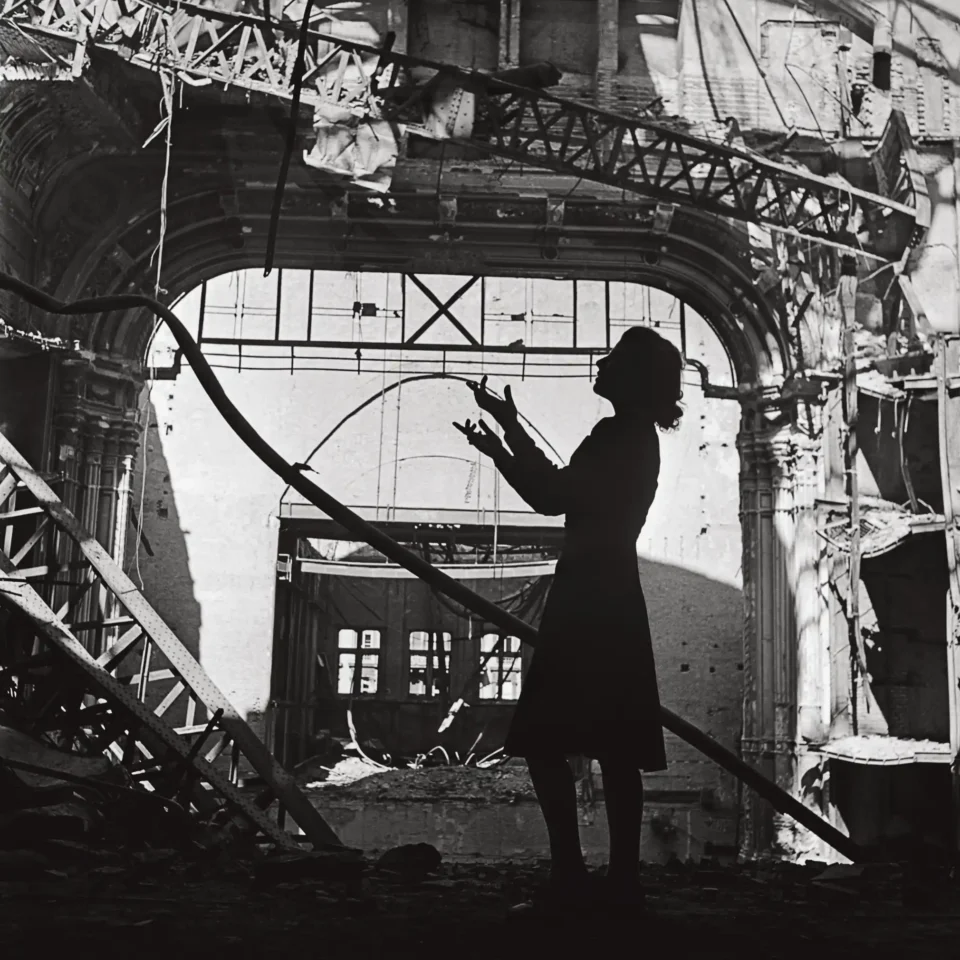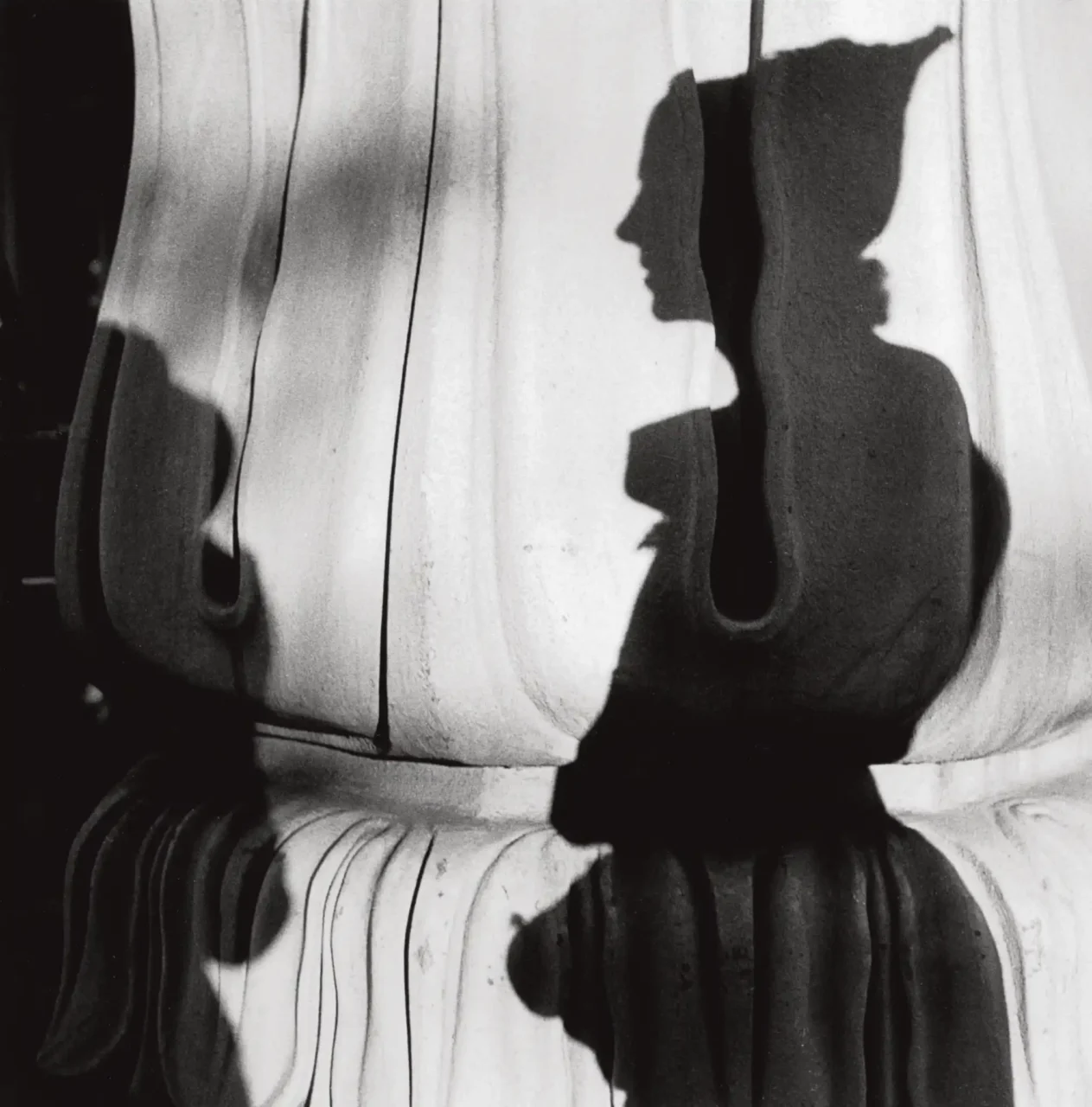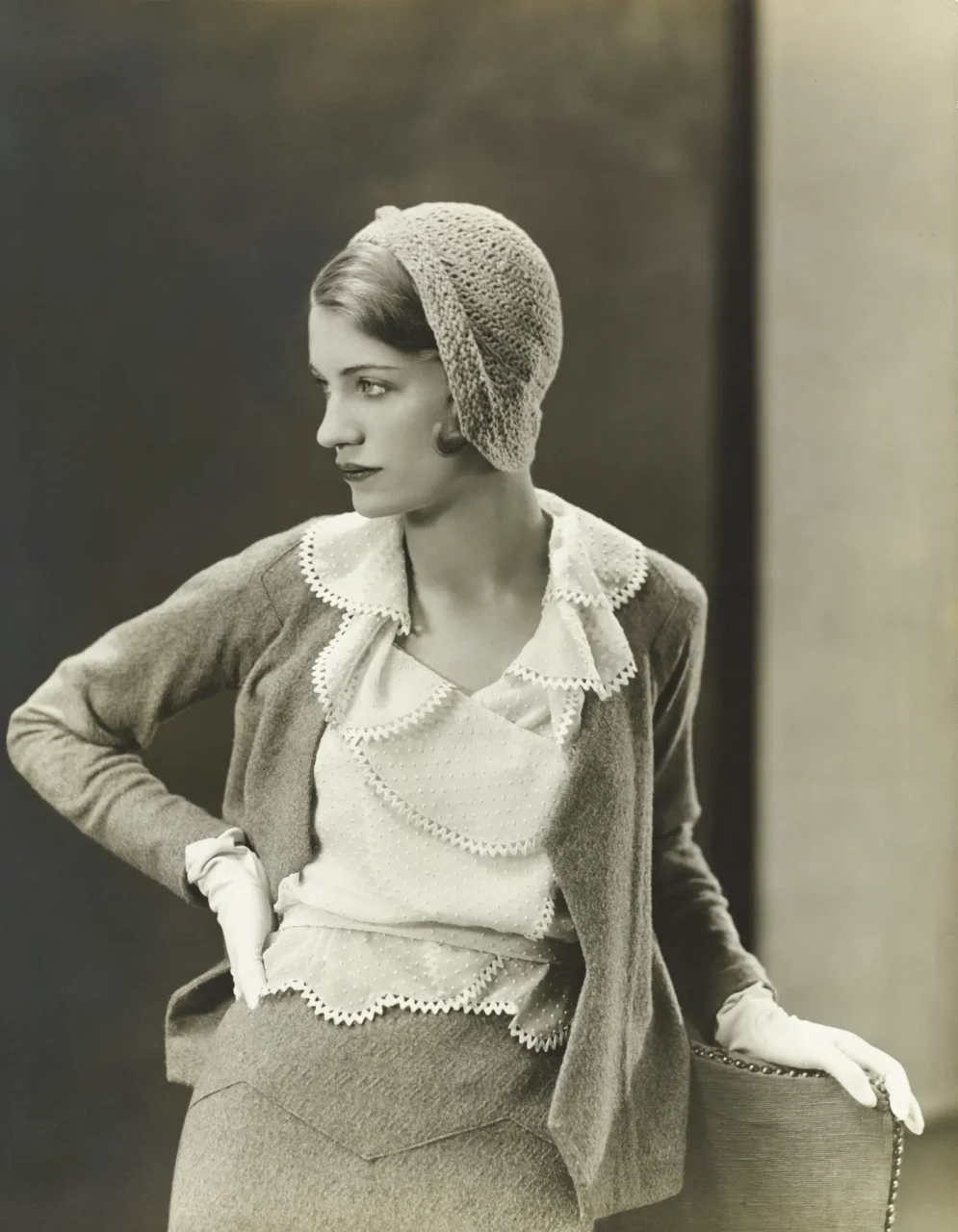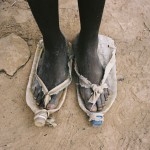Elizabeth Miller, better known as Lee Miller, is a photographer and war reporter – among others – who lived through key periods of the 20th century such as the Roaring Twenties and the Surrealist movement, 1930s New York, the Blitz in England and the Liberation in 1944.
If you’ve seen (or not) the recently released biopic Lee, directed by Ellen Kuras and starring Kate Winslet, Alexander Skarsgård and Andy Semberg, this is your chance to take a closer look at one of the most fascinating and almost unknown photographers of her generation. Although Lee Miller is best known as Man Ray’s muse, the film focuses on her involvement as a photojournalist during the Second World War.
Paris or the Climax of Surrealism
Born in 1907 in Poughkeepsie (New York, USA), Lee Miller grew up with a father who was a photographer in his spare time. However, the incestuous photographs he took of her, and the rape she suffered at the age of 7, had a major influence on her future work, tinged with both violence and realism. After being spotted in New York by press tycoon Condé Nast (owner of Vogue and Vanity Fair), Lee Miller embarked on a modeling career at Vogue in 1927, appearing several times on the magazine’s front cover.
Her experience at Vogue also introduced her to the world of photography, thanks to Edward Steichen, who recommended her to Man Ray, photographer and figurehead of the Surrealist movement in Paris. Lee Miller’s career took a real turn.
As Man Ray’s collaborator, muse and lover (Portrait of Lee Miller, 1929), Lee Miller took part in the discovery of solarization, a technique that allowed bodies and objects to be surrounded by an almost natural black halo. Her work brought her into contact with important Surrealist artists such as Jean Cocteau (she even played in Le Sang d’un poète in 1930!), Paul Eluard or Pablo Picasso.
Her breakup with a jealous Man Ray, who even took credit for some of her work, encouraged her to return to New York, where she opened her own studio for advertising and portrait photography (Dorothy Hill, [solarized], Lee Miller Studios, Inc., New York, USA, 1933 or Self Portrait with Headband, Lee Miller Studios, Inc., New York, USA, 1932).
One of the few female war correspondents
After marrying an Egyptian businessman and settling in Cairo, where she photographed deserts (Portrait of Space, Near Siwa, Egypt, 1937), she returned to Europe with English painter Roland Penrose, who was to become her new partner.
With the Second World War already underway, Lee Miller was hired in London by British Vogue as a photographer in 1940 (Wartime Fashion and Lifestyle, Hampstead, London, England, May 1941). But it was in 1942 that she was accredited by the US Army to document the Blitz.
In the summer of 1944, Lee Miller became a war correspondent and was authorized to follow the American army during the Allied Liberation (St Malo, 1944). She was one of the few women photojournalists authorized to follow the army at the front. During this period, she photographed day-to-day warfare, military hospitals, the D-Day landings, the liberation of German cities and the discovery of concentration camps (Ohrdruf, Buchenwald and Dachau). The horror of the camps and the return of the survivors was captured and broadcast thanks to the work of Lee Miller, who sent them to Vogue with the inscription “Believe it”, so unreal did they seem.
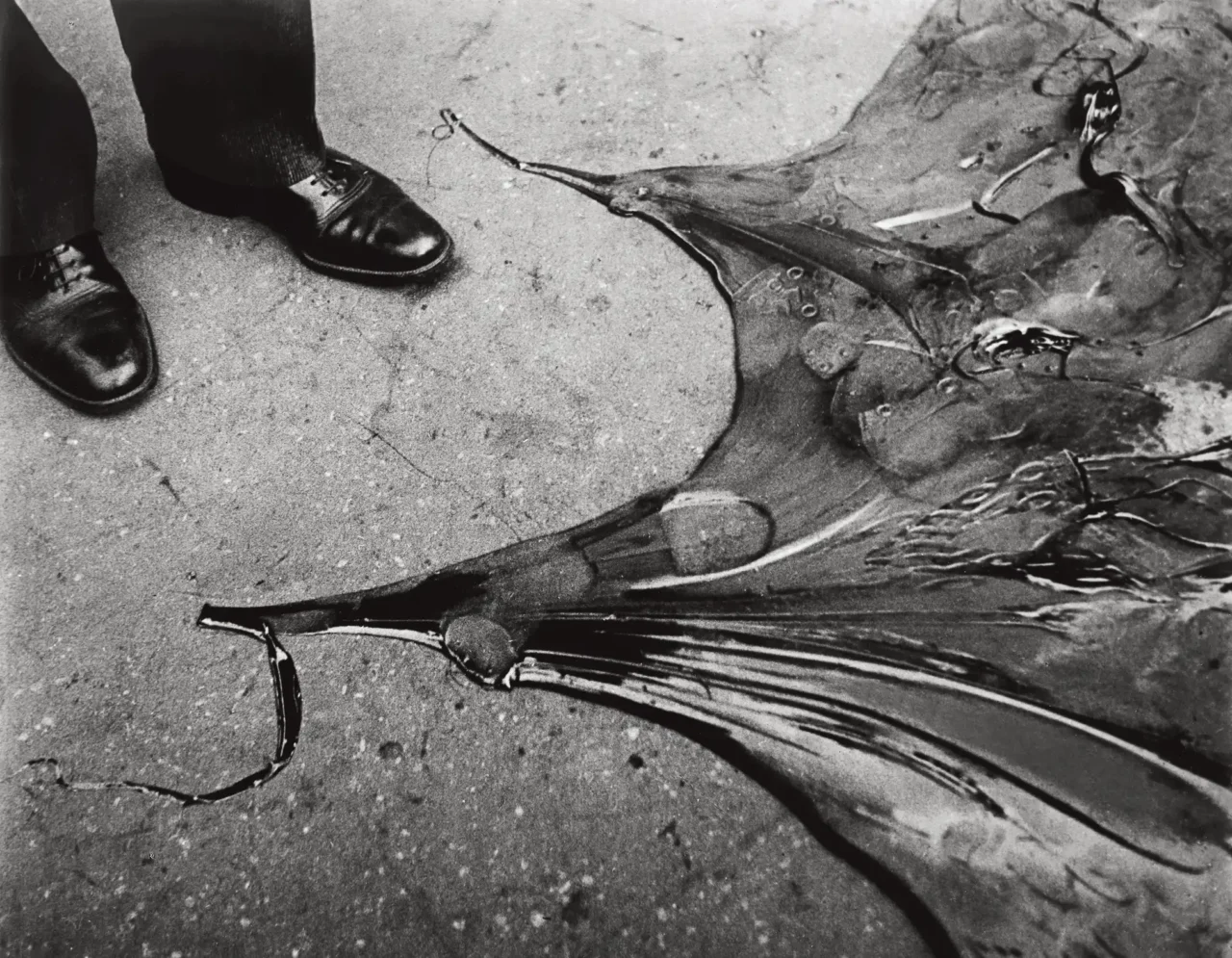
One of the best-known photos was taken by American photographer David E. Scherman of Life magazine (Lee Miller in Hitler’s bathtub, Munich, Germany, April 1945). Indeed, after the liberation of the Dachau camp in April 1945, Miller and Scherman found themselves in the command post of the 4th American Division and former home of Adolf Hitler. Lee Miller’s provocative irony inspired this famous bathroom photograph, whose details and allusions are numerous and open to interpretation (Hitler’s portrait, the dirty boots on the white carpet, the woman’s bust, etc.).
Although the post-war years plunged her into alcoholism and what is now known as post-traumatic stress disorder, Lee Miller continued to work on a few projects for British Vogue before abandoning professional photography to devote herself to a new passion: cooking. It was not until after her death in 1977 that her son Anthony Penrose discovered by chance some 60,000 photographs taken by his mother.
Why is Lee Miller worth (re)discovering?
Apart from the film’s release, discovering her work also allows us to see just how innovative she was. She was able to find a place for herself in the Surrealist circle, while at the same time being an independent woman artist.
Although Lee Miller remains one of the only female photo-reporters of the Second World War to have entered the death camps, she also documented the war from a female perspective, photographing women in the military (A Polish pilot [Anna Leska] who flies a Spitfire for the A.T.A., White Waltham, England, 1942), women survivors and women victims of the “Epuration”. Thanks to her innovative view of the society of the time and her surrealist influence, Lee Miller was able to emancipate herself from the image of the trophy wife (which she was for a time) to offer avant-garde images that are a must-see!
Lee Miller’s work is available online: https: //www.leemiller.co.uk/
Lee Miller, une pionnière (presque) oubliée
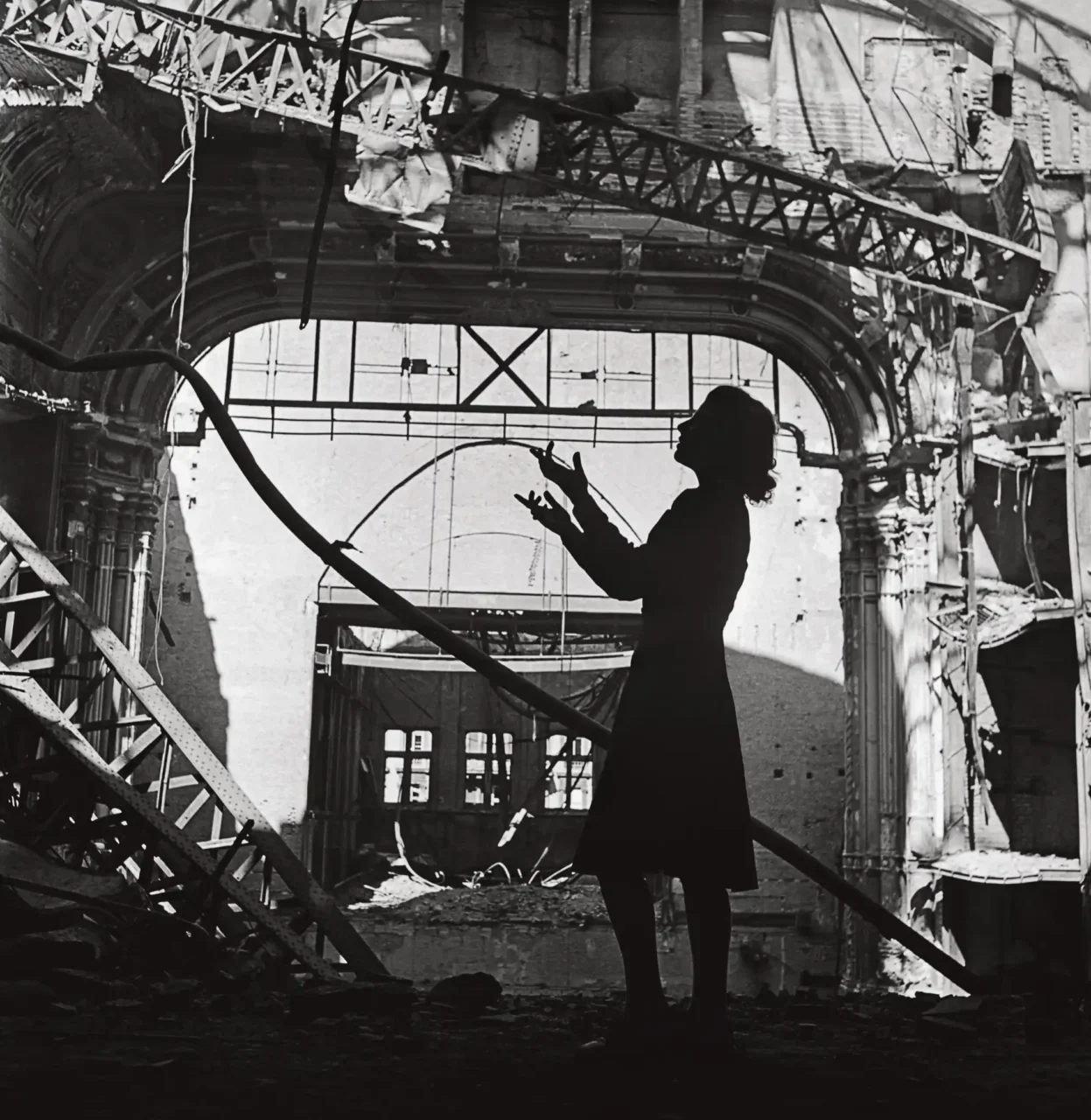
Elizabeth Miller, plus connue sous le nom de Lee Miller, est une photographe et reporter de guerre – entre autres – qui a traversé des époques clés du XXe siècle telles que les Années folles et le mouvement surréaliste, le New York des années 1930, le Blitz en Angleterre ou la Libération en 1944.
Si vous avez vu (ou non) le biopic Lee Miller sorti récemment, réalisé par Ellen Kuras et avec Kate Winslet, Alexander Skarsgård et Andy Semberg, c’est l’occasion de s’intéresser à une des photographes les plus fascinantes et presque méconnues de sa génération. Si Lee Miller est principalement connue pour avoir été la muse de Man Ray, le film mets plutôt en lumière son engagement en tant que photojournaliste lors de la Seconde Guerre mondiale.
Paris ou l’apogée du surréalisme
Née en 1907 à Poughkeepsie (New York, États-Unis), Lee Miller grandit avec un père photographe à ses heures perdues. Toutefois, les clichés qu’il prend d’elle – à connotation incestueuse – et le viol qu’elle subit à 7 ans l’influenceront grandement dans ses travaux futurs, à la fois tintés de violence et de réalisme. Après avoir été repérée à New York par le magnat de la presse Condé Nast (propriétaire de Vogue et Vanity Fair), Lee Miller entame en 1927 une carrière de mannequin chez Vogue et fait plusieurs fois la Une du magazine.
Son expérience chez Vogue lui permet aussi de s’initier à l’univers de la photographie grâce à Edward Steichen, qui la recommande auprès de Man Ray, photographe et figure de proue du mouvement surréaliste à Paris. La carrière de Lee Miller prend alors un véritable tournant.
Collaboratrice, muse et amante de Man Ray (Portrait of Lee Miller, 1929), Lee Miller participe à la découverte de la technique de la solarisation, une technique permettant de cerner les corps et les objets d’un halo noir presque naturel. Son travail lui permet de rencontrer des figures importantes du mouvement telles que Jean Cocteau (elle joue même dans Le Sang d’un poète en 1930 !), Paul Eluard ou Pablo Picasso.
Sa rupture avec Man Ray, jaloux et qui s’est au passage attribué certaines de ses œuvres, l’encourage à retourner à New York, où elle ouvre son propre studio de photographie publicitaire et de portraits (Dorothy Hill, [solarized], Lee Miller Studios, Inc., New York, USA, 1933 ou encore Self Portrait with Headband, Lee Miller Studios, Inc., New York, USA, 1932).
Une des rares femmes correspondantes de guerre
Après son mariage avec un homme d’affaires égyptien et son installation au Caire, où elle photographie notamment les déserts (Portrait of Space, near Siwa, Egypt, 1937), elle retourne en Europe avec le peintre anglais Roland Penrose, qui deviendra son nouveau compagnon.
Alors que la Seconde Guerre mondiale a déjà commencé, Lee Miller est embauchée à Londres par British Vogue comme photographe en 1940 (Wartime Fashion and Lifestyle, Hampstead, Londres, Angleterre, Mai 1941). Mais c’est en 1942 qu’elle est accréditée par la US Army afin de documenter la période du Blitz.
Lors de l’été 1944, Lee Miller devient correspondante de guerre et est ainsi autorisée à suivre l’armée américaine lors de la Libération par les Alliés (Saint-Malo, 1944). Il s’agit alors d’une des rares femmes photojournalistes autorisées à suivre l’armée sur le front. Durant cette période, elle photographie la guerre au quotidien, les hôpitaux militaires, le Débarquement, la libération des villes allemandes et la découverte des camps de concentration (Ohrdruf, Buchenwald et Dachau). L’horreur des camps et le retour des survivants ont été capturés et diffusés grâce au travail de Lee Miller, qui les envoya à Vogue avec l’inscription « Believe it » tellement cela semblait irréel.
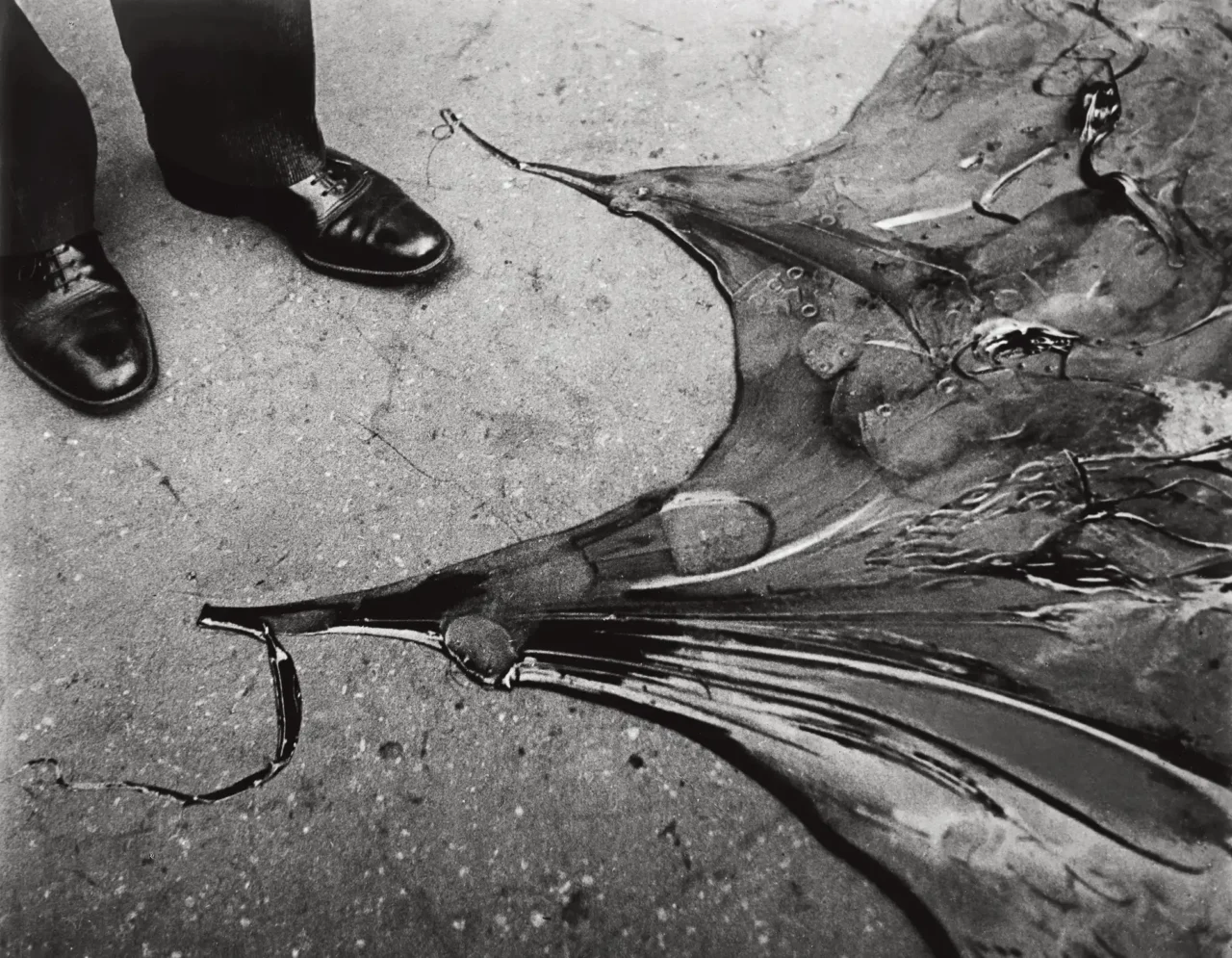
Une des photos les plus connues a été réalisée par le photographe américain David E. Scherman du magazine Life (Lee Miller in Hitler’s bathtub, Munich, Germany, Avril 1945). En effet, après la libération du camp de Dachau en avril 1945, Miller et Scherman se trouvent dans le poste de commandement de la 4e division américaine et ancien domicile d’Adolf Hitler. L’ironie et le côté provocateur de Lee Miller inspireront cette célèbre photographie réalisée dans la salle de bain et dont les détails et allusions sont nombreux et sujets à interprétation (le portrait d’Hitler, les bottes sales sur le tapis blanc, le buste de femme, etc.).
Si l’après-guerre la plonge dans l’alcoolisme et ce qu’on appelle maintenant le stress post-traumatique, Lee Miller continue quelques projets pour British Vogue avant d’abandonner la photographie professionnelle pour se consacrer à une nouvelle passion : la cuisine. Ce n’est qu’après sa mort en 1977 que son fils Anthony Penrose découvre par hasard près de 60 000 photos réalisées par sa mère.
Pourquoi Lee Miller est-elle à (re)découvrir ?
Outre la sortie du film, découvrir son travail permet aussi de voir à quel point elle a été novatrice. Elle a en effet réussi à se faire une place dans le cercle surréaliste tout en étant une femme artiste et indépendante professionnellement.
Bien que Lee Miller reste une des seules femmes photoreporters de la Seconde Guerre mondiale ayant pénétré dans les camps de la mort, elle a aussi documenté la guerre avec un regard féminin en photographiant les femmes engagées militairement (A Polish pilot [Anna Leska] who flies a Spitfire for the A.T.A., White Waltham, Angleterre, 1942), les femmes survivantes ou encore les femmes victimes de l’Épuration. Grâce à son regard novateur sur la société de l’époque et son influence surréaliste, Lee Miller a su s’émanciper de l’image de la femme trophée (qu’elle a été un temps) pour proposer des images avant-gardistes et qu’il faut absolument découvrir !
L’œuvre de Lee Miller est disponible en ligne : https://www.leemiller.co.uk/
Margaux Nguyen Tang
